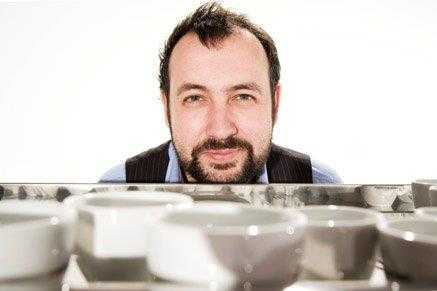Share your coffee stories with us by writing to info@comunicaffe.com.
I don’t remember making my first cappuccino. I’m sure it wasn’t very good. Most likely it contained boiling hot milk and under-extracted espresso, brewed on a filthy machine and served in a cup that was far too big. I’m sure I served it, though, and I’m sure at the time I thought it was passable, and perhaps most worryingly, after the customer added the two sugars and waited five minutes for it to cool down, I’m sure they probably enjoyed it.
I do remember drinking my first cappuccino. I remember it burned my tongue, and that upon whining to my mother about it I was informed that “boiling hot” was a hallmark of the famous beverage. The first time I was trained on an espresso machine—by my brother no less—I was instructed that “espresso is easy, and milk was the truly hard part.” These would be two of the earliest “truths” I’d learn in coffee, only to have them debunked later.
I have worked in coffee for around eight years now, and while my early days can’t really be described as professional, they do hold value in anchoring my perspective on what a barista is today, how the job has changed, and where I believe it is going.
Where latte art was an early, clearly identifiable hallmark of a great barista, lately its significance has been downplayed a bit as the definition of a barista’s job evolves. There’s an emerging sentiment that a barista is simply someone who makes coffee as a profession, though I wonder what more it can also be. A good barista understands where the coffee they’re serving comes from, what factors at origin defined the cup profile, how these characteristics were maintained during roasting, and how they can be tweaked differently in various brewing methods.
Latte art is expected of a professional barista and still serves as the best visual aesthetic in the effort to engage consumers on truly delicious coffee. Until the public shares our same appreciation for an even roast, or a beautiful espresso pour, latte art will retain its poster-boy function. But it is not the sum of a barista’s skill. A great barista is able to brew coffee efficiently on many different devices—and perhaps the most challenging of these is the espresso machine.
There is a concept of what espresso should be, an experience interpreted differently by many people and cultures. Some relish the process of brewing espresso more than they do the final product, while recently many are learning to appreciate espresso as simply another way of brewing coffee, a method that is fascinating, complex and occasionally spectacular.
It is perhaps the challenge of espresso that draws people in. You tend to fixate on what you have in front of you, and for many fresh baristas—certainly for myself—this was the espresso machine. While some see a bewildering array of buttons and nozzles, dangerous because they don’t understand it, others consider the espresso machine something that simply heats up water and moves it around. I think I’m now part of the latter camp, but I certainly appreciate how some machines achieve that function.
Another early “truth” I was led to believe, and indeed preach, was that only a few machines were capable of delivering good espresso—that only a few machines on the market could successfully steam milk and brew espresso at the same time, while delivering a stable temperature of water that wasn’t too hot. I was guilty for a long time of putting faith solely in multi-boiler espresso machines and dismissing any heat-exchange systems. This belief was sustained by the fact that I’d only ever used multi-boiler machines. I would read about how people temperature-surfed their machines in an attempt to brew with the appropriate water temperature, flushing the group head for extended periods to introduce enough cool water to the boiler to lower the temperature accordingly. I remember feeling fortunate that the machine I worked on allowed me to be confident that such issues were of no concern. Only much later would I learn that where many heat-exchange machines were indeed guilty of overheating the brew water and thus extracting more bitter-tasting solubles, the machine I was working on often failed to get hot enough, resulting in more sour-tasting solubles. Seemingly I should have been temperature-surfing, too.















